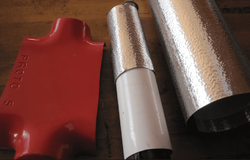I a going to start insulating all my boiler piping and I am wondering if the fiberglass or the foam type is better for insulating hot water pipes. What R value or how thick of insulation for 1-1/4" pipe? Anyone know of any good spots to purchase it ?
Pipe Insulation
- Thread starter jimdeq
- Start date
-
Active since 1995, Hearth.com is THE place on the internet for free information and advice about wood stoves, pellet stoves and other energy saving equipment.
We strive to provide opinions, articles, discussions and history related to Hearth Products and in a more general sense, energy issues.
We promote the EFFICIENT, RESPONSIBLE, CLEAN and SAFE use of all fuels, whether renewable or fossil.


